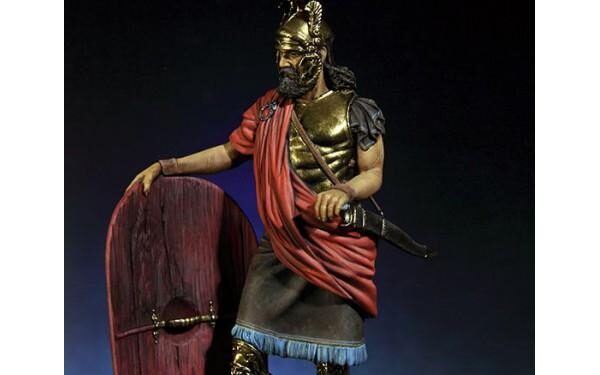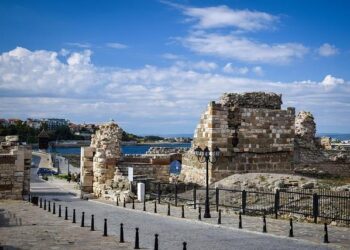Archaeologists have uncovered a remarkable Thracian warrior tomb in Bulgaria, shedding new light on the ancient civilization that once thrived in the region. The discovery, announced by HeritageDaily, offers valuable insights into the burial practices, art, and social hierarchy of the Thracians, a people known for their fierce warriors and rich cultural heritage. Excavations at the site have revealed well-preserved artifacts and intricate tomb architecture, promising to deepen our understanding of Bulgaria’s historic past.
Discovery Sheds New Light on Thracian Burial Practices and Cultural Significance
Archaeologists have unearthed a remarkable Thracian warrior tomb in Bulgaria, providing invaluable insights into the rituals and social hierarchy of this enigmatic ancient civilization. The grave, distinguished by its intricate gold artifacts and well-preserved weaponry, challenges previous assumptions about Thracian burial customs, indicating a more complex interplay between warfare, spirituality, and status than previously understood. Notably, the presence of elaborate ceremonial objects alongside practical armaments reveals that the warrior was not only a formidable fighter but also revered in religious or cultural ceremonies, shedding light on the multifaceted role of Thracian elites.
Key findings from the tomb include:
- Gold-plated horse harnesses decorated with symbolic motifs
- Inscribed bronze vessels linked to funerary rites
- A double-edged sword featuring unique craftsmanship styles
- Organic remnants suggesting elaborate funerary feasts
| Artifact | Description | Significance |
|---|---|---|
| Gold Diadem | Ornate headpiece with floral patterns | Symbol of royal or priestly status |
| Bronze Cauldron | Large vessel engraved with animal figures | Used in sacrificial or libation rituals |
| Iron Spearhead | Well-preserved, sharp-edged weapon | Indicative of warrior’s martial prowess |
Archaeological Details Reveal Unique Artifacts and Tomb Construction Techniques
The excavation of the Thracian warrior tomb has unveiled a remarkable array of artifacts that shed light on the cultural and technological advancements of the era. Among the most striking finds are intricately crafted gold and bronze items, including ceremonial weapons, ornate belt buckles, and finely detailed jewelry that suggest a high level of craftsmanship and artistic expression. The presence of rare imported goods also points to far-reaching trade connections and the warrior’s elite social status within the Thracian hierarchy.
Equally fascinating are the construction techniques employed in the tomb’s architecture, which display a unique blend of local and regional influences. The tomb comprises a stone-lined burial chamber with expertly joined blocks, topped by a corbelled dome that demonstrates advanced engineering skills. Archaeologists also identified a sophisticated drainage system designed to protect the interior from water damage, an uncommon feature in contemporary Thracian tombs. The following table summarizes key architectural elements discovered:
| Feature | Material | Function |
|---|---|---|
| Corbelled Dome | Locally sourced limestone | Structural roof support |
| Stone-lined Chamber | Cut stone blocks | Burial and preservation |
| Drainage System | Clay pipes and gravel | Water protection |
- Increased funding for archaeological excavation and site restoration
- Development of educational programs targeted at both local communities and international visitors
- Improved visitor facilities and interpretive centers designed to engage tourists while protecting delicate areas
- Increased funding for archaeological excavation and site restoration
- Development of educational programs targeted at both local communities and international visitors
- Improved visitor facilities and interpretive centers designed to engage tourists while protecting delicate areas
The excavation of the Thracian warrior tomb has unveiled a remarkable array of artifacts that shed light on the cultural and technological advancements of the era. Among the most striking finds are intricately crafted gold and bronze items, including ceremonial weapons, ornate belt buckles, and finely detailed jewelry that suggest a high level of craftsmanship and artistic expression. The presence of rare imported goods also points to far-reaching trade connections and the warrior’s elite social status within the Thracian hierarchy.
Equally fascinating are the construction techniques employed in the tomb’s architecture, which display a unique blend of local and regional influences. The tomb comprises a stone-lined burial chamber with expertly joined blocks, topped by a corbelled dome that demonstrates advanced engineering skills. Archaeologists also identified a sophisticated drainage system designed to protect the interior from water damage, an uncommon feature in contemporary Thracian tombs. The following table summarizes key architectural elements discovered:
| Feature | Material | Function | ||||||||||||||||||||
|---|---|---|---|---|---|---|---|---|---|---|---|---|---|---|---|---|---|---|---|---|---|---|
| Corbelled Dome | Locally sourced limestone | Structural roof support | ||||||||||||||||||||
| Stone-lined Chamber | Cut stone blocks | Burial and preservation | ||||||||||||||||||||
| Drainage System | Clay pipes and gravel | Experts Urge Enhanced Protection and Tourism Development for Bulgaria’s Thracian Heritage The recent uncovering of a Thracian warrior tomb in Bulgaria has reignited calls within the archaeological and cultural heritage communities to bolster conservation efforts and enhance tourism infrastructure around these invaluable sites. Experts emphasize that Bulgaria’s Thracian legacy, which dates back millennia, remains largely underrepresented on the global tourism map, despite its rich tapestry of art, burial customs, and historical significance. Without robust protection measures, many sites risk further deterioration due to natural elements and unchecked human activity. Leading specialists advocate for a multi-faceted approach to preserve and promote the Thracian heritage, including:
|
















